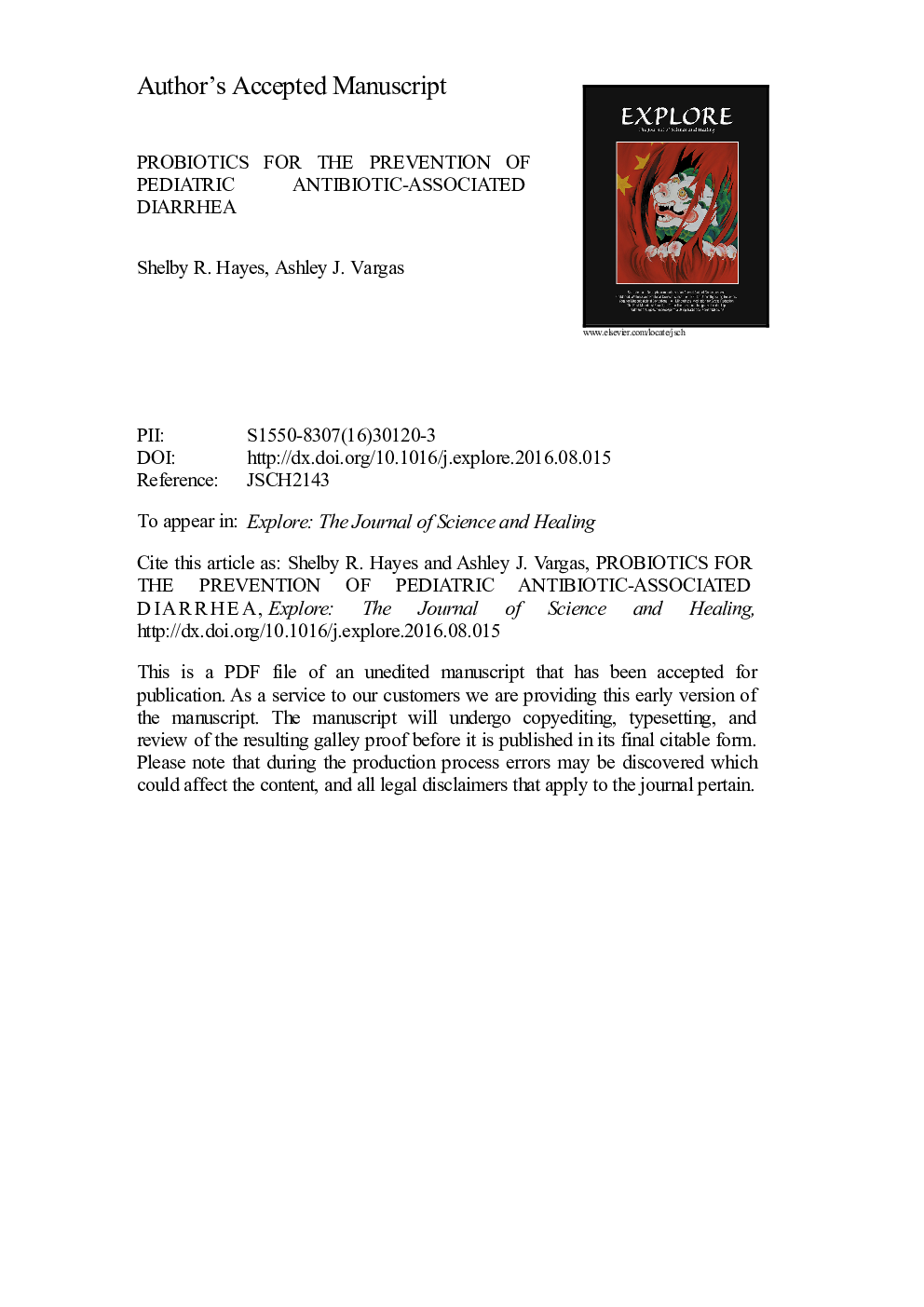| Article ID | Journal | Published Year | Pages | File Type |
|---|---|---|---|---|
| 5572773 | EXPLORE: The Journal of Science and Healing | 2016 | 8 Pages |
Abstract
Moderate quality evidence suggests a protective effect of probiotics in preventing AAD. Our pooled estimate suggests a precise (RR 0.46; 95% CI: 0.35-0.61) probiotic effect with an NNT of 10. Among the various probiotics evaluated, Lactobacillus rhamnosus or Saccharomyces boulardii at 5-40 billion colony-forming units/day may be appropriate given the modest NNT and the likelihood that adverse events are very rare. It is premature to draw conclusions about the efficacy and safety of other probiotic agents for pediatric AAD. Although no serious adverse events were observed among otherwise healthy children, serious adverse events have been observed in severely debilitated or immunocompromised children with underlying risk factors including central venous catheter use and disorders associated with bacterial/fungal translocation. Until further research has been conducted, probiotic use should be avoided in pediatric populations at risk for adverse events. Future trials would benefit from a standard and valid outcomes to measure AAD.
Related Topics
Health Sciences
Medicine and Dentistry
Complementary and Alternative Medicine
Authors
Shelby R. BS, Ashley J. PHD, MPH, RDN, FAND,
